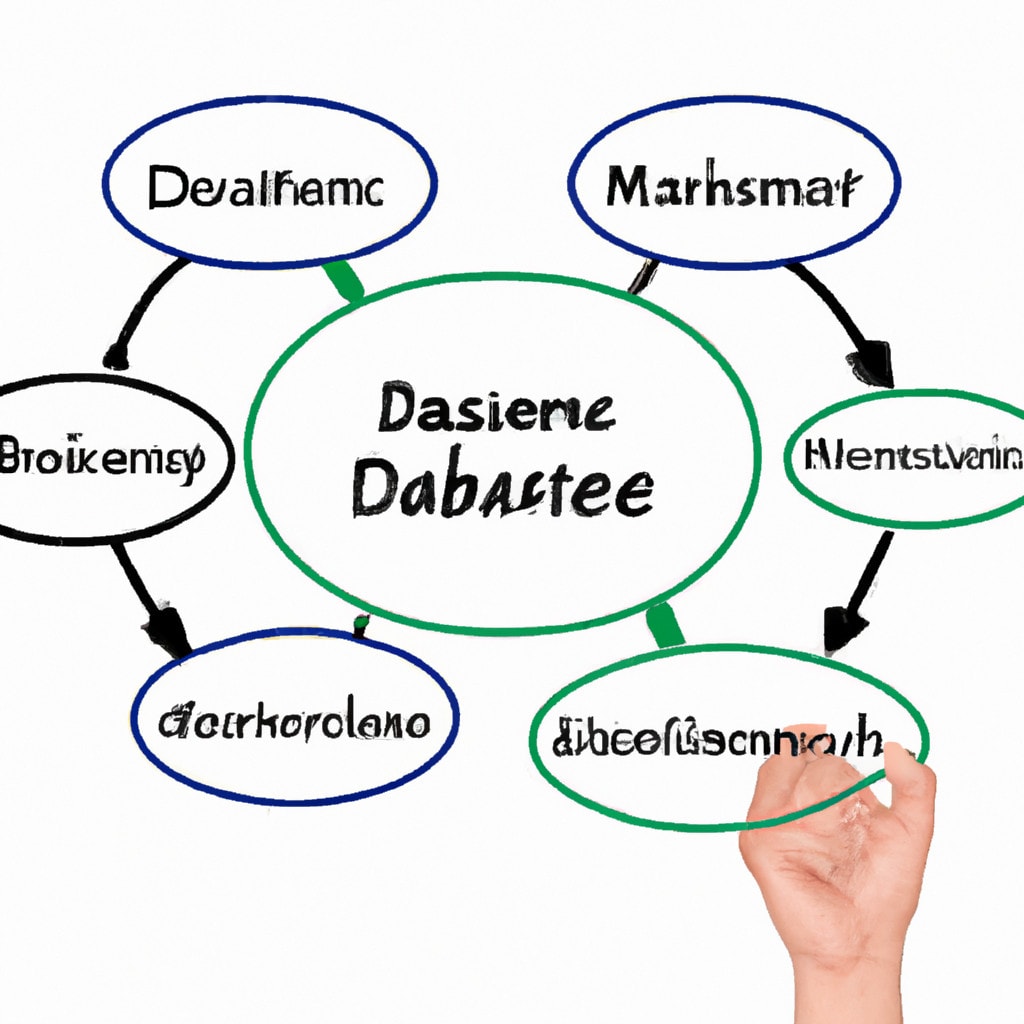Title: Create Localhost MongoDB: A Comprehensive Guide for Advanced Programmers
Are you looking for a way to create a *localhost MongoDB* development environment for your next project? Look no further. In this article, we will delve deep into setting up a localhost MongoDB step-by-step so that you can be up and running in no time. But before we dive in, let me assure you that by the end of this article, you will have an indispensable tool in your programming arsenal that you never knew you needed.
Table of Contents
1. Introduction to MongoDB
2. Why Use Localhost MongoDB?
3. Installing MongoDB
4. Configuring MongoDB
5. Creating a Localhost Database
6. Securing Your Localhost MongoDB
7. Connecting to Your Localhost MongoDB
8. Conclusion
# 1. Introduction to MongoDB
MongoDB is a popular _NoSQL_ database that has gained widespread adoption due to its scalability, performance, and ease of use. Unlike traditional SQL databases, MongoDB stores data in a flexible, JSON-like format called *BSON* (Binary JSON), making it ideal for handling large volumes of unstructured or semi-structured data.
# 2. Why Use Localhost MongoDB?
Developers often use a *localhost MongoDB* setup for a variety of reasons:
– To create a sandboxed environment that mimics their production infrastructure.
– To enable rapid development and testing without affecting live data.
– To allow advanced programmers to experiment with new features and functionality.
In short, using a localhost MongoDB environment can help streamline your development process and ensure a more stable and secure end product.
# 3. Installing MongoDB
Follow the steps below to install MongoDB on your local machine.
Windows
1. Download the latest version of MongoDB from [MongoDB Download Center](https://www.mongodb.com/try/download/community).
2. Run the downloaded installer and follow the on-screen instructions.
3. Ensure that you select `Complete` installation type and enable the option to `Install MongoDB as a Service`
macOS
1. Install [Homebrew](https://brew.sh/) if you haven’t already.
2. Run `brew tap mongodb/brew`.
3. Install MongoDB with `brew install mongodb-community`.
Linux (Ubuntu)
1. Import the MongoDB public GPG key with `wget -qO – https://www.mongodb.org/static/pgp/server-5.0.asc | sudo apt-key add -`
2. Add the official MongoDB repository with `echo “deb http://repo.mongodb.org/apt/ubuntu focal/mongodb-org/5.0 multiverse” | sudo tee /etc/apt/sources.list.d/mongodb.list`
3. Perform an update with `sudo apt-get update`
4. Finally, install MongoDB with `sudo apt-get install -y mongodb-org`
# 4. Configuring MongoDB
After you have successfully installed MongoDB, it’s time to configure the database to run on localhost.
Windows
1. Create a data directory for MongoDB with `md “datadb”` and `md “datalog”` under the `C:` drive.
2. Create a configuration file called `mongod.cfg` in the `C:Program FilesMongoDBServer{VERSION}bin` folder, replacing `{VERSION}` with your installed version number.
3. Add the following configuration to the `mongod.cfg` file:
“`
systemLog:
destination: file
path: C:datalogmongod.log
storage:
dbPath: C:datadb
net:
bindIp: 127.0.0.1
“`
macOS & Linux
1. Create a data and log directory for MongoDB with `sudo mkdir -p /data/db` and `sudo mkdir -p /data/log`.
2. Create a configuration file called `mongod.conf` in the `/etc/` folder.
3. Add the following configuration to the `mongod.conf` file:
“`
systemLog:
destination: file
path: /data/log/mongod.log
storage:
dbPath: /data/db
net:
bindIp: 127.0.0.1
“`
# 5. Creating a Localhost Database
To create a localhost database, follow the steps below.
1. Start MongoDB by running `mongod –config ` (e.g., `C:Program FilesMongoDBServer{VERSION}binmongod.exe –config C:Program FilesMongoDBServer{VERSION}binmongod.cfg`)
2. In a separate terminal/command prompt, run `mongo` to access the MongoDB shell.
3. Use the command `use ` to create a new database or switch to an existing one.
# 6. Securing Your Localhost MongoDB
IMPORTANT: Never use your localhost MongoDB instance for production purposes. Always ensure that you have adequate security measures in place before deploying your MongoDB environment.
1. Create an administrative user by running the following commands in the MongoDB shell:
“`
use admin
db.createUser({user: “admin”, pwd: “password”, roles: [{role: “root”, db: “admin”}]})
“`
2. Update your `mongod.cfg` or `mongod.conf` file with these lines under the `net:` section:
“`
security:
authorization: “enabled”
“`
3. Restart MongoDB and authenticate as the admin user:
“`
mongod –config –auth
mongo -u “admin” -p “password” –authenticationDatabase “admin”
“`
# 7. Connecting to Your Localhost MongoDB
Now that your localhost MongoDB is set up and secured, you can connect to it using a variety of clients, such as [*MongoDB Compass*](https://www.mongodb.com/products/compass) or your favorite programming language’s MongoDB driver.
# 8. Conclusion
Congratulations! You have successfully learned how to create a localhost MongoDB environment for your development purposes. By using a localhost MongoDB instance, you can streamline your development process and ensure that your projects are more stable and secure. Now go forth and harness the power of MongoDB in your applications!
CRUD User Management System – Nodejs, Express, MongoDB & EJS (Reupload)
MongoDB Crash Course
How to create a MongoDB connection to localhost?
To create a MongoDB connection to localhost, follow these steps:
1. Install MongoDB: Before creating a connection, ensure that MongoDB is installed on your system. Download and install the appropriate version for your operating system from the official MongoDB website.
2. Start the MongoDB server: After installing MongoDB, start the MongoDB server by running the following command in your terminal (command prompt on Windows): `mongod`. This will start the server on the default port (27017) and data directory (`/data/db` for macOS and Linux or `datadb` for Windows).
3. Create a MongoDB client application: Now, you can create a client application to connect to your localhost MongoDB server. You can use various programming languages like JavaScript, Python, and others with their respective MongoDB drivers. In this example, let’s use Node.js and the official MongoDB Node.js driver.
4. Install Node.js and NPM: If you don’t have Node.js and NPM (Node Package Manager) installed, download and install them from the official Node.js website.
5. Create a new Node.js project: Create a new directory for your project and navigate to it in your terminal. Run `npm init` to initialize a new Node.js project and follow the prompts to set up your project.
6. Add the MongoDB Node.js driver: Run `npm install mongodb` to add the MongoDB driver to your project.
7. Create a connection to MongoDB: Inside your project folder, create a new JavaScript file (e.g., `index.js`). Add the following code to establish a connection to your localhost MongoDB server:
“`javascript
const MongoClient = require(‘mongodb’).MongoClient;
// Connection URL
const url = ‘mongodb://localhost:27017’;
// Database name
const dbName = ‘myDatabase’;
// Create a new MongoClient
const client = new MongoClient(url, { useNewUrlParser: true, useUnifiedTopology: true });
// Connect to the server
client.connect(function (err) {
if (err) {
console.error(‘Error connecting to MongoDB:’, err);
return;
}
console.log(‘Connected successfully to localhost MongoDB server’);
// Use the specified database
const db = client.db(dbName);
// Perform operations on your database…
// Close the connection
client.close();
});
“`
Replace `myDatabase` with the name of the database you want to connect to or create.
8. Run your client application: In your terminal, run `node index.js` (or the name of your JavaScript file) to execute the script and establish a connection to your localhost MongoDB server.
After completing these steps, you will have successfully created a MongoDB connection to localhost.
How to create MongoDB locally?
To create a MongoDB locally, follow these steps:
1. Download MongoDB: Visit the official MongoDB website (https://www.mongodb.com/try/download/community) and download the MongoDB Community Server according to your operating system (Windows, macOS, or Linux).
2. Install MongoDB: Run the installer and follow the installation wizard to install MongoDB on your machine. Make sure you choose the “Complete” installation option.
3. Create a directory for MongoDB data: By default, MongoDB stores its data in the “/data/db” directory. Create this directory if it doesn’t already exist. You can use the following commands depending on your OS:
– Windows:
“`
md datadb
“`
– macOS/Linux:
“`
sudo mkdir -p /data/db
sudo chown `id -u` /data/db
“`
4. Start MongoDB server: Open a terminal or command prompt and navigate to the directory where MongoDB is installed. By default, it should be in the “/bin” subdirectory of your MongoDB installation path. Run the following command to start the MongoDB server:
“`
mongod
“`
5. Connect to MongoDB: Now that the MongoDB server is running, you can connect to it using the MongoDB Shell or any MongoDB client. Open another terminal or command prompt, navigate to the “/bin” subdirectory of your MongoDB installation path, and run the following command to access the MongoDB Shell:
“`
mongo
“`
6. Create a database: In the MongoDB Shell, you can create a new database by running the following command, replacing “myDatabase” with the desired name of your database:
“`
use myDatabase
“`
You now have a MongoDB server running locally on your machine with a new database. To interact with your MongoDB, you can use the MongoDB Shell commands or connect to it using your preferred programming language and driver.
How to run MongoDB server on localhost?
To run a MongoDB server on localhost, follow these steps:
1. Install MongoDB: First, you need to download and install the MongoDB Community Server from the official website (https://www.mongodb.com/try/download/community). Choose the appropriate version for your operating system, and follow the installation instructions.
2. Create a data directory: MongoDB requires a folder to store its data. By default, it uses the “/data/db” folder in the root directory. To create this folder, open a terminal or command prompt and execute:
“`
mkdir -p /data/db
“`
If you want to use a different directory, create a new folder and note its path for the next step.
3. Set permissions: Ensure that you have read and write permissions for the data directory. To set these permissions, run:
“`
sudo chown -R `id -u` /data/db
“`
Replace “/data/db” with the path to your custom data directory if necessary.
4. Start the MongoDB server: To start the MongoDB server, execute the following command in your terminal or command prompt:
“`
mongod
“`
If you’re using a custom data directory, add the `–dbpath` option followed by the directory path:
“`
mongod –dbpath
“`
5. Access MongoDB: After successfully starting the MongoDB server, open a new terminal or command prompt, and run the `mongo` command to access the MongoDB shell:
“`
mongo
“`
Now, you are connected to the MongoDB server on your localhost and can start creating, querying, and modifying databases and collections.
Remember to place the MongoDB server’s binary directory in your system’s PATH variable or provide the full path to “mongod” and “mongo” executables if you encounter any issues.
Can I have a local MongoDB?
Yes, you can have a local MongoDB installation on your localhost. By installing MongoDB locally, you can store and manage your data within your local machine without relying on an external service. This is especially useful for development and testing purposes.
To set up a local MongoDB, follow these steps:
1. Download the appropriate version of MongoDB Community Server from the official website: https://www.mongodb.com/try/download/community
2. Install the downloaded package by following the installation instructions specific to your operating system (Windows, macOS, or Linux).
3. Start the MongoDB server by executing the appropriate command or script for your platform.
4. You can now connect to your local MongoDB server using a MongoDB client or driver, typically by specifying “localhost” and the default MongoDB port (27017) as the connection parameters.
Remember that, as a content creator, it’s crucial to understand the importance of managing data efficiently and securely. With a local MongoDB, you gain more control over your data and can work with it in a controlled environment.
How to set up and configure a local MongoDB instance on your computer for localhost development?
To set up and configure a local MongoDB instance on your computer for localhost development, follow these steps:
1. Download MongoDB: First, visit the MongoDB official website (https://www.mongodb.com/download-center/community) to download the latest version of MongoDB Community Server for your operating system.
2. Install MongoDB: Follow the installation wizard for your respective operating system to install MongoDB. Make sure to choose the “Complete” installation type. After installation is completed, MongoDB will be installed in a default directory, such as `/usr/local` for macOS or `C:Program FilesMongoDB` for Windows.
3. Create Data Directory: MongoDB stores its data in a folder called “data” inside a directory named “db”. To create this directory, run the following command in your terminal (for macOS or Linux) or Command Prompt (for Windows):
“`
mkdir -p /data/db
“`
For Windows, if you installed MongoDB in a custom directory, create the “datadb” folder inside that directory.
4. Set Permissions (macOS and Linux only): Ensure that your user account has read and write permissions for the `/data/db` directory. To do this, run the following command in your terminal:
“`
sudo chown -R `id -un` /data/db
“`
5. Start MongoDB: To start the MongoDB server, open a terminal or command prompt, and run the following command:
“`
mongod
“`
This will start the MongoDB server, listening on port 27017 by default.
6. Verify MongoDB Connection: To verify that your MongoDB server is running and accepting connections, open another terminal or command prompt, and run the following command:
“`
mongo
“`
This will connect to the running MongoDB server and open the MongoDB shell. You should see a message that says “connecting to: mongodb://127.0.0.1:27017”.
Congratulations! You have successfully set up and configured a local MongoDB instance on your computer for localhost development. To stop the MongoDB server, press `Ctrl` + `C` in the terminal or command prompt where the `mongod` command was executed.
What are the essential steps to connect a localhost application to a local MongoDB database?
To connect a localhost application to a local MongoDB database, follow these essential steps:
1. Install MongoDB: First, download and install MongoDB on your local machine. You can find the installation instructions for various operating systems on the official MongoDB website.
2. Run MongoDB server: Start your MongoDB server by running the `mongod` command in your terminal (Mac or Linux) or Command Prompt (Windows). This will start the MongoDB daemon process and make the database available for connection.
3. Create your application: Develop your localhost application using any programming language or framework of your choice like Node.js, Python, PHP, etc.
4. Install a MongoDB driver: Install the appropriate MongoDB driver for your programming language. For example, use `mongodb` package for Node.js, `pymongo` for Python, or `mongo-php-driver` for PHP.
5. Connect to MongoDB: Use the installed MongoDB driver to establish a connection to your local MongoDB server. The default connection URL is usually `mongodb://localhost:27017`, where `27017` is the default port number for MongoDB.
6. Perform CRUD operations: Once connected, you can perform Create, Read, Update, and Delete (CRUD) operations on your MongoDB database using the functions provided by the MongoDB driver in your chosen programming language.
7. Close the connection: After completing your database operations, it is essential to close the connection to the MongoDB server. Use the appropriate function or method in your chosen programming language to close the connection.
By following these steps, you can successfully connect your localhost application to a local MongoDB database and interact with it.
How can you ensure secure access and data integrity when working with MongoDB on localhost?
To ensure secure access and data integrity when working with MongoDB on localhost, follow these best practices:
1. Use Authentication: Enable authentication by starting the MongoDB instance with the –auth option or set the security.authorization configuration file option to enabled.
2. Create Users and Roles: Create user accounts with specific roles, limiting the access privileges of each user. Assign minimal permissions necessary for each user.
3. Limit Network Exposure: Bind the MongoDB instance to the localhost by setting the bindIp configuration option to 127.0.0.1 or using the –bind_ip command-line option.
4. Encrypt Communication: Encrypt all communication between your application and MongoDB using TLS/SSL. Configure the MongoDB server to require TLS/SSL connections (use –sslMode requireSSL or set net.ssl.mode as requireSSL in the configuration file).
5. Data Encryption at Rest: Use storage engine-level encryption to protect data at rest, such as MongoDB’s WiredTiger Encrypted Storage Engine (Enterprise Edition only).
6. Regular Backups: Perform regular backups of your MongoDB data to help recover from accidental data loss or corruption.
7. Monitor Activity: Keep an eye on logs, metrics, and other diagnostic information to detect and prevent unauthorized access and malicious activity.
8. Keep Software Updated: Regularly update MongoDB and any other related software to the latest versions, addressing any known security issues.
By adhering to these best practices, you can ensure secure access and maintain data integrity when working with MongoDB on localhost.





